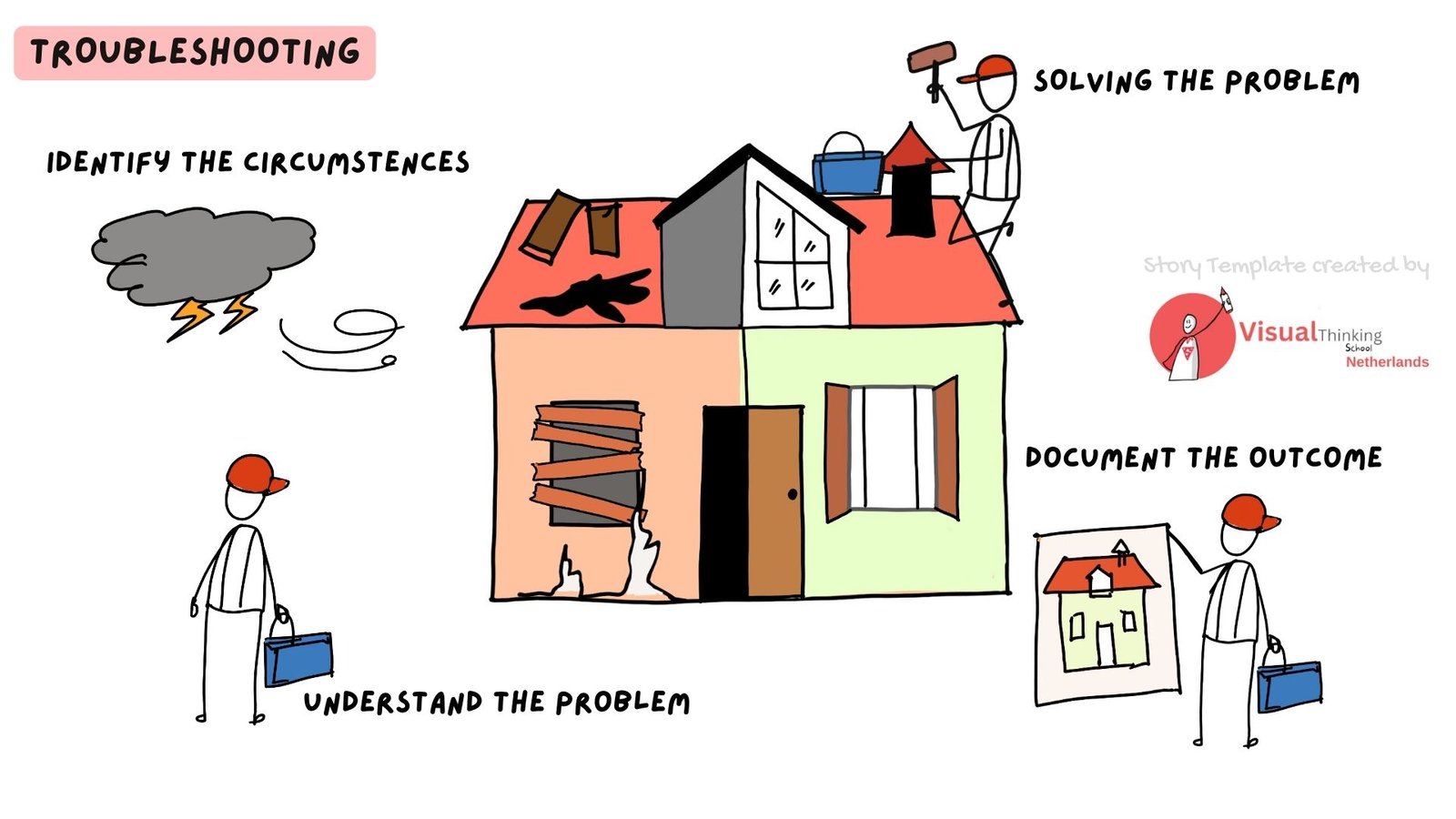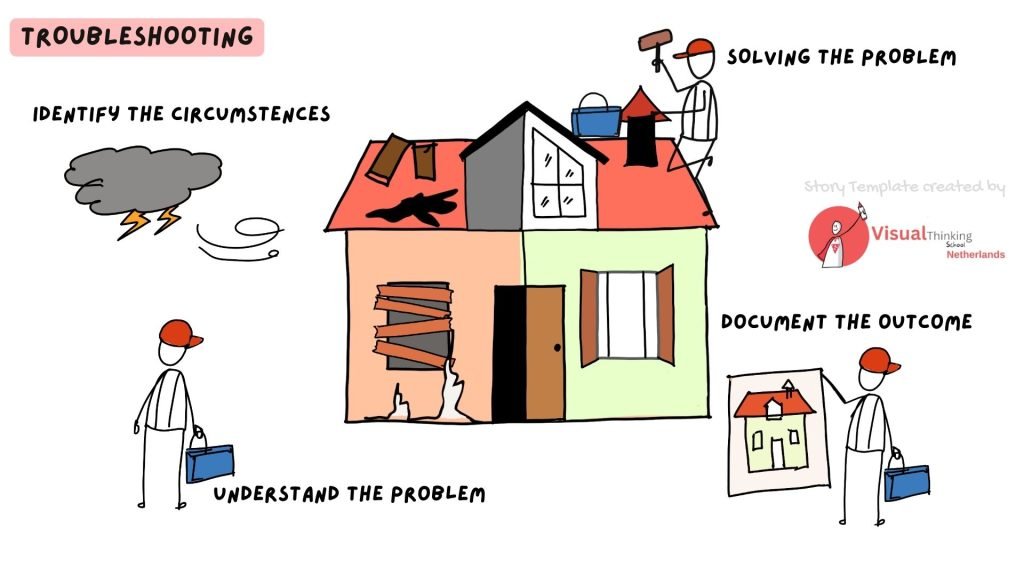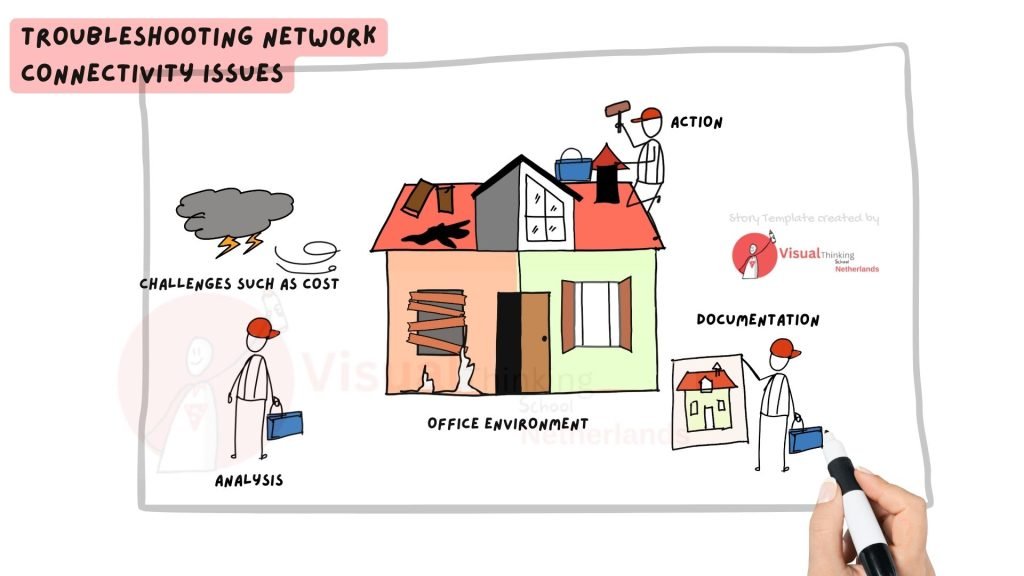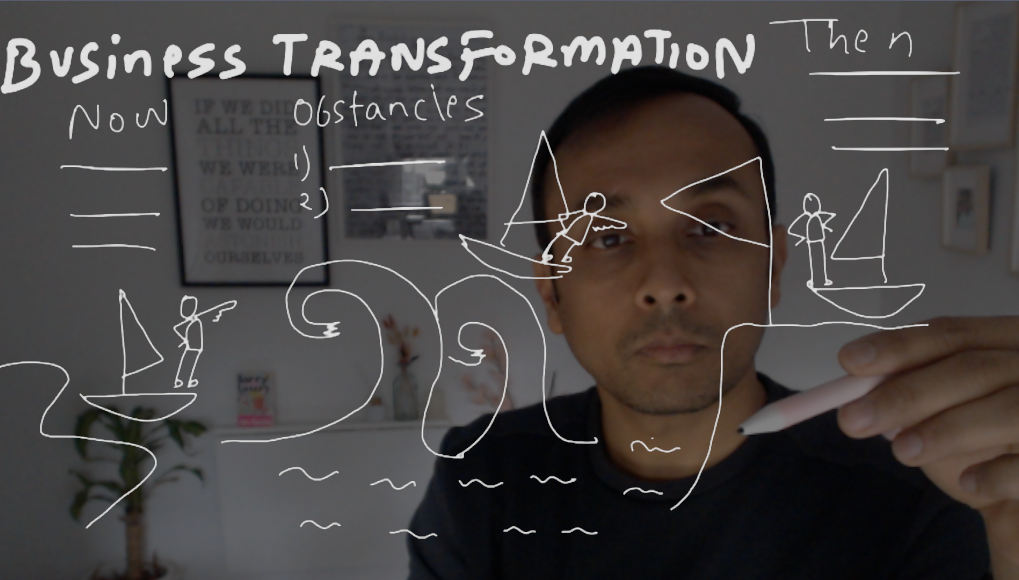
Troubleshooting is like renovating a broken-down house. While one person stands pondering the next steps, another documents the process and yet another starts repairing. Despite challenges like rain and clouds, the team remains focused on restoring the house. Let’s explore this metaphor, highlighting the importance of analysis, documentation, and action in troubleshooting.

The visual depicts a broken and tattered house, symbolizing a problem in need of troubleshooting. One person is standing, representing analysis and contemplation of the issue. Another person is documenting the process with maps and papers, symbolizing the importance of documentation here. A third person is actively repairing the house, symbolizing the action needed to resolve the problem. Rain and clouds symbolize external challenges and unforeseen circumstances that can arise during this.
Challenge: Resolving network connectivity issues in an office environment.
Troubleshooting Process:
Skills Required:
By approaching troubleshooting like renovating a broken-down house, with a focus on analysis, documentation, and action, teams can effectively resolve complex issues and restore functionality.

👉 Check our ready to use 100+ digital business storytelling templates >> SketchStory


👉 👉 Check our our Courses and LIVE Trainings on Business Drawings, Sketchnoting and Visual Facilitation Game Plays